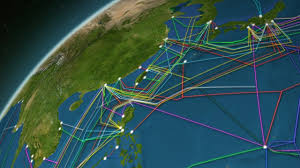
Breaking News
 If High-Income Canadians Are Talking About Groceries, the Economy Is Broken
If High-Income Canadians Are Talking About Groceries, the Economy Is Broken
 Is Oracle a ticking time bomb?
Is Oracle a ticking time bomb?
 JAMMED UP Passengers 'trapped in cars' in middle of road as self-driving Waymo vehicles stal
JAMMED UP Passengers 'trapped in cars' in middle of road as self-driving Waymo vehicles stal
 Quantum Teleportation Achieved Over 79 km of Standard Internet Fiber
Quantum Teleportation Achieved Over 79 km of Standard Internet Fiber
Top Tech News
 Perfect Aircrete, Kitchen Ingredients.
Perfect Aircrete, Kitchen Ingredients.
 Futuristic pixel-raising display lets you feel what's onscreen
Futuristic pixel-raising display lets you feel what's onscreen
 Cutting-Edge Facility Generates Pure Water and Hydrogen Fuel from Seawater for Mere Pennies
Cutting-Edge Facility Generates Pure Water and Hydrogen Fuel from Seawater for Mere Pennies
 This tiny dev board is packed with features for ambitious makers
This tiny dev board is packed with features for ambitious makers
 Scientists Discover Gel to Regrow Tooth Enamel
Scientists Discover Gel to Regrow Tooth Enamel
 Vitamin C and Dandelion Root Killing Cancer Cells -- as Former CDC Director Calls for COVID-19...
Vitamin C and Dandelion Root Killing Cancer Cells -- as Former CDC Director Calls for COVID-19...
 Galactic Brain: US firm plans space-based data centers, power grid to challenge China
Galactic Brain: US firm plans space-based data centers, power grid to challenge China
 A microbial cleanup for glyphosate just earned a patent. Here's why that matters
A microbial cleanup for glyphosate just earned a patent. Here's why that matters
 Japan Breaks Internet Speed Record with 5 Million Times Faster Data Transfer
Japan Breaks Internet Speed Record with 5 Million Times Faster Data Transfer
Many people overlook the fact that the internet relies on vast networks of cables connecting ...

Inside an unassuming brick building in the windswept seaside town of West Jutland, Denmark, lies the beating heart of the internet. Well, one of them.
Underneath the Atlantic Ocean, a small web of cables connect the internet in Europe to North America, and in West Jutland, one of those cables arrives back on land. These cables cross 30,500 kilometers so that Danish computers can reach Google's servers in South Carolina and vice versa. It's easy to overlook the fact that our internet still relies on so much physical infrastructure, but a visit with Keld Sørensen, the marine maintenance manager of this facility, will quickly remind you that we're all literally connected through wires sitting on the ocean floor.
Read More...

 Advanced Propulsion Resources Part 1 of 2
Advanced Propulsion Resources Part 1 of 2

